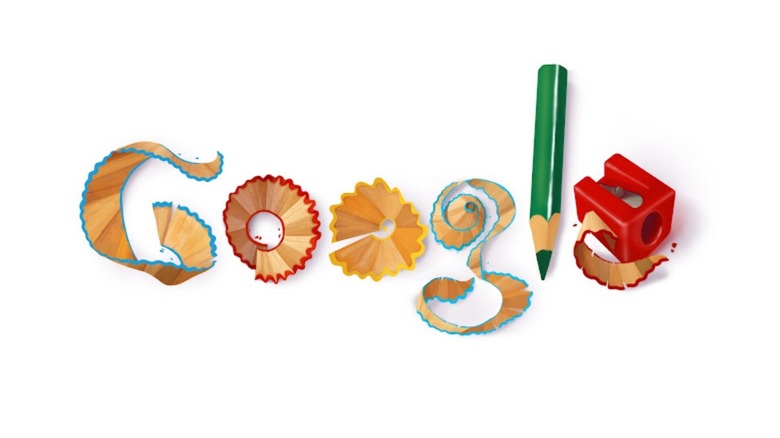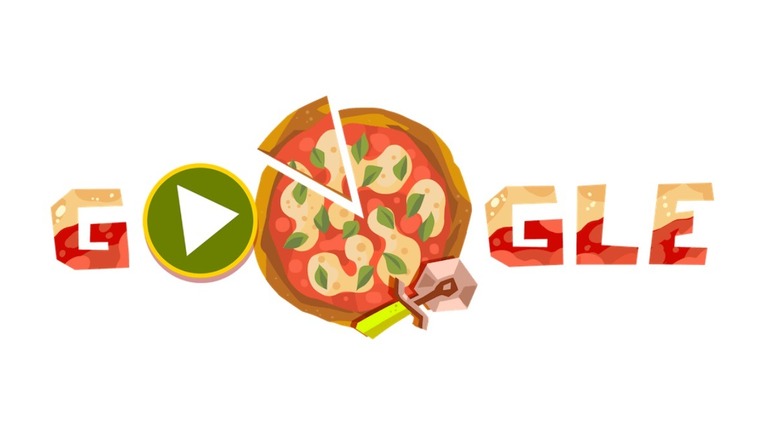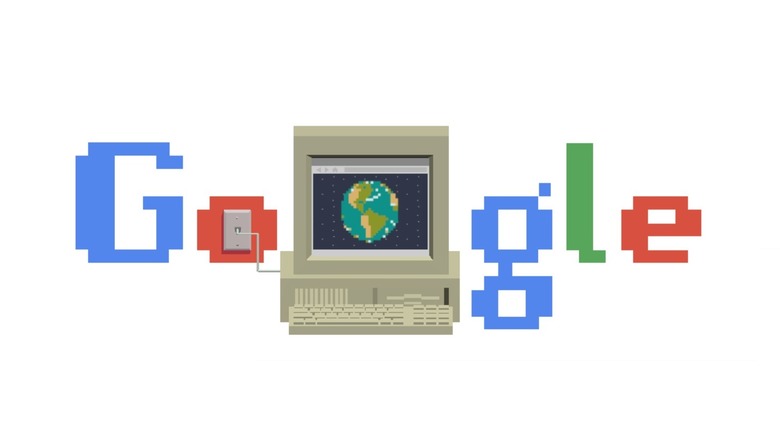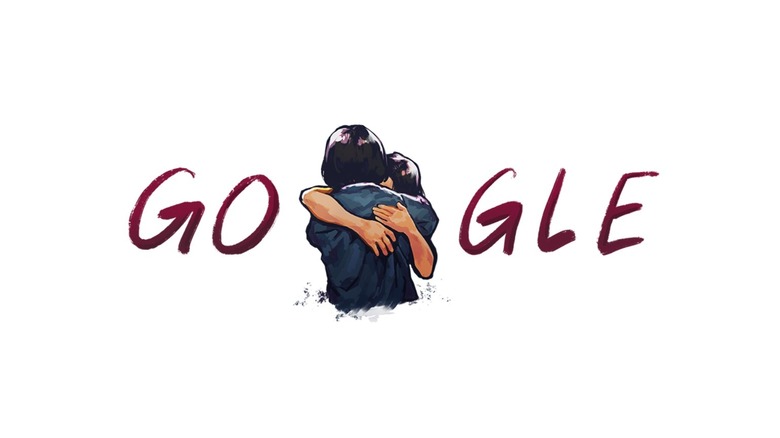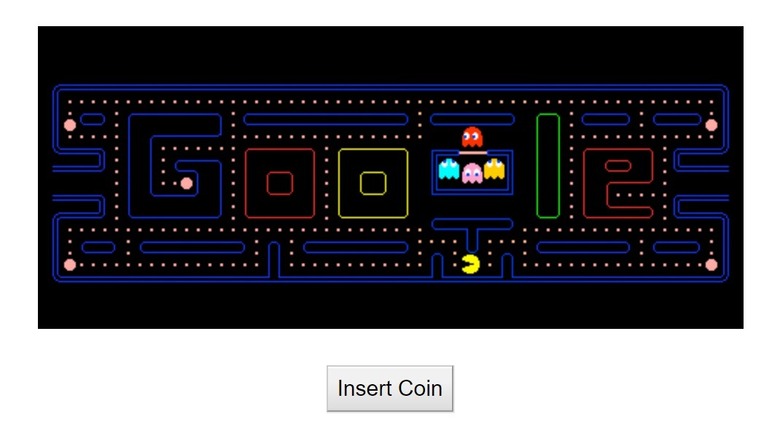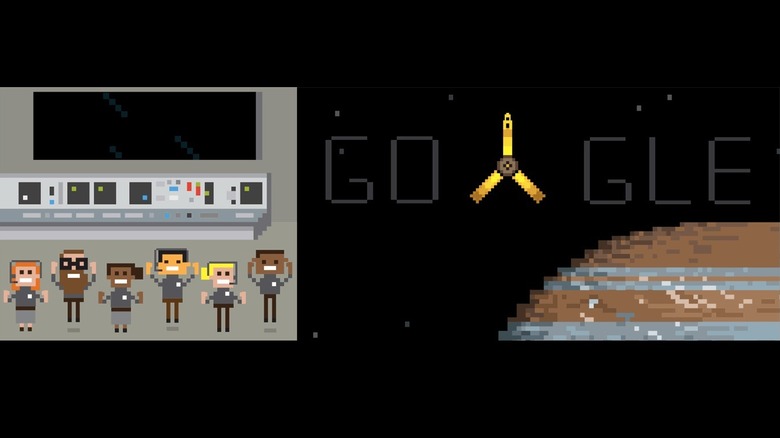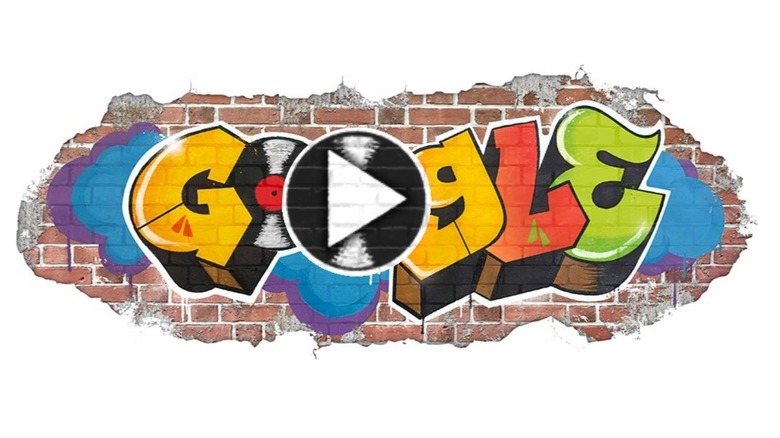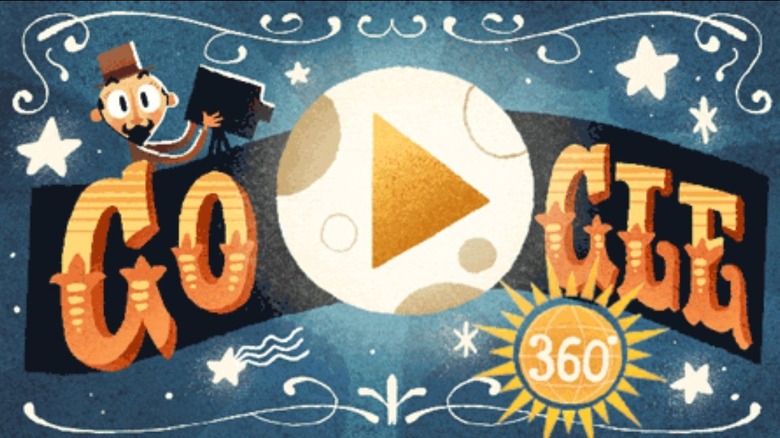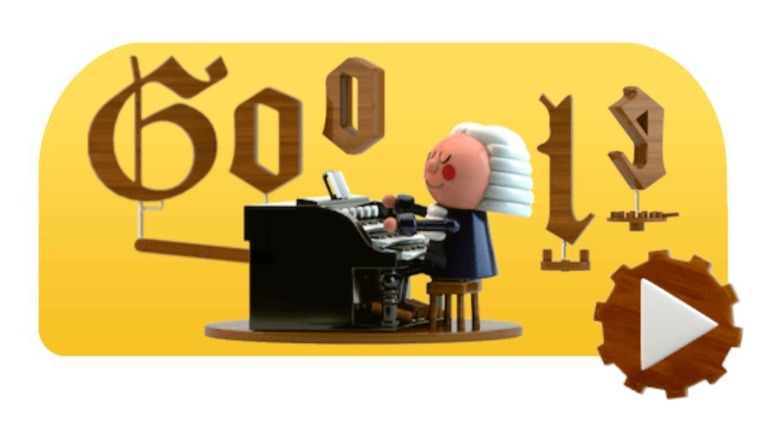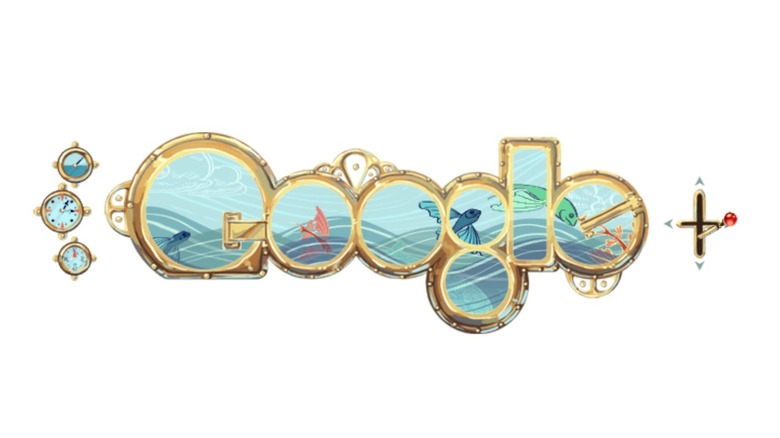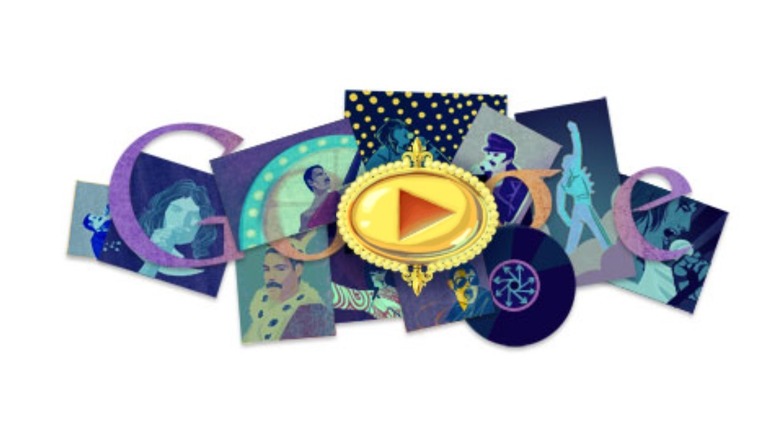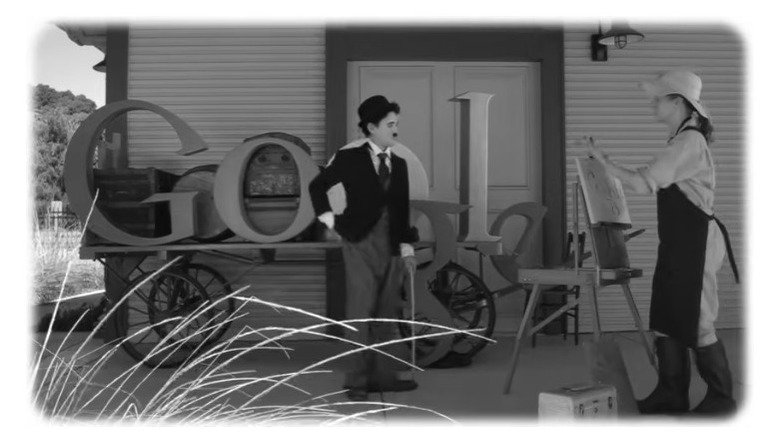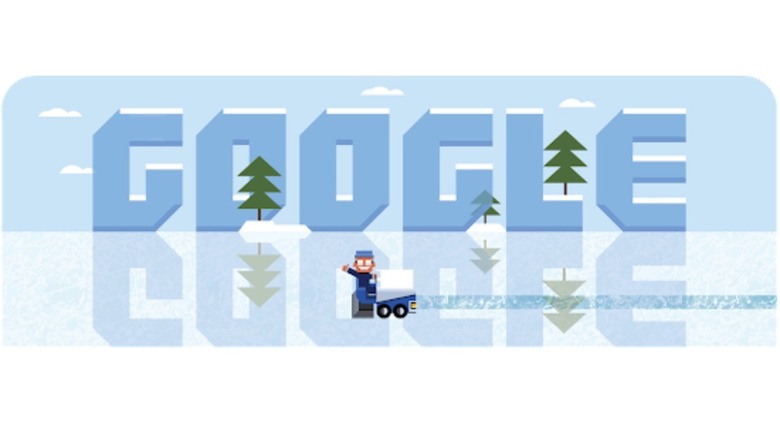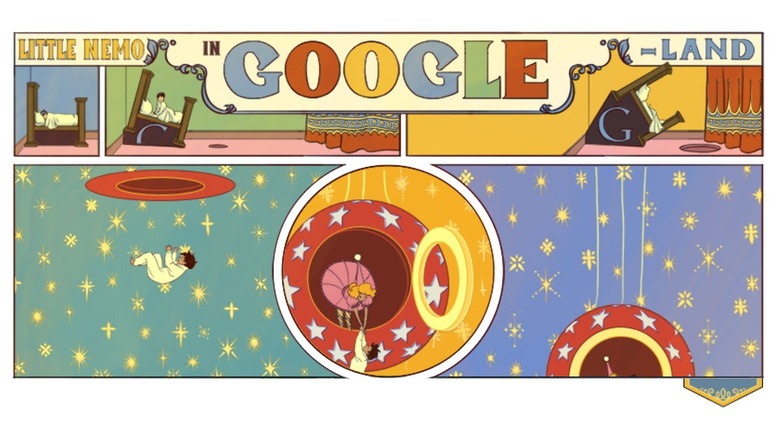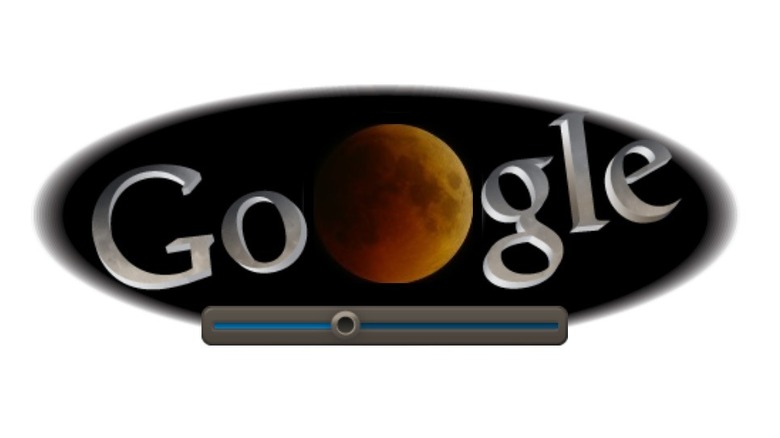The 14 Best Google Doodle's Of All Time
In 1998, before most had ever heard of Google, the company's founders, Larry Page and Sergey Brin, were preparing for Burning Man. They wanted a playful way to tell users that the founders were out of office, so they meddled with the company logo. Visitors to the site would temporarily see a drawing of a stick figure in place of the second "o" in Google (via Google). The idea of modifying the company logo to signify special days stuck.
Two years later, Page and Brin asked then-intern Dennis Hwang to create a modified logo celebrating Bastille Day. It was such a hit that Hwang was named Chief Doodler and the Google Doodle was born. Since those early doodles, an entire team has sprung up to handle the demand. More than 5,000 doodles have been crafted over the last two decades commemorating significant days, holidays, inventions, birthdays, and notable moments.
In the flood of information available online, the Google Doodle offers a lighthouse. A passive yet alluring invitation to learn about a person, place, or thing you might not have otherwise considered. But over the years Google Doodles have become interactive and adaptive to new technologies. Best of all, Google maintains an archive so you can revisit your favorite doodles from years past, including these classics.
Celebrating pizza
Pizza is one of the great unifiers in this world. Most everybody appreciates the special joy of digging into a fresh slice. If there's any food worthy of being memorialized in the digital walk of fame, this is it.
Released December 6, 2021, the "Celebrating Pizza" doodle was more than just a sketch. Clicking the pizza-themed logo launched a pop-up game, challenging players to slice up various pizzas in such a way that each of their virtual friends gets the precise toppings they want. It starts out relatively simple with a Margherita pizza. The toppings are evenly distributed so dividing it among six friends is easy. Things get increasingly complex with each passing level, challenging you to contend with conflicting preferences and jumbled toppings.
Along with the game, Google offers a brief history lesson on the world's favorite food, including the mind-blowing fact that an average of 350 slices of pizza are consumed every second in the United States alone. Global pizza consumption is estimated to top 5 billion pies a year.
30th anniversary of the World Wide Web
While there's no single person solely credited with the invention of the internet, many trace the origin of the web back to March 12, 1989. On that day, Tim Berners-Lee delivered a proposal entitled "Information Management: A Proposal" to his boss at CERN. It was intended as a way for scientists all over the world to quickly share information with one another (via CERN).
For the first few years, that's what the World Wide Web was for. In fact, according to CERN, the first ever website was dedicated to this scientific endeavor and was hosted on Berners-Lee's own computer. Then, in 1993, CERN made the software public domain, and the internet took off. It's still used to do science, of course, but it's also used for just about every other aspect of modern life.
On March 12, 2019, Google released its doodle celebrating the 30th anniversary of the day Berners-Lee delivered his conception of the internet. It's an unassuming doodle drawn in pixel art. In place of the second "o" you'll find an early computer connected to a phone line and the slowly emerging image of a spinning globe on the screen. It's a familiar sight for users of the early internet and a perfect homage to the moment that made all of this possible.
Doodle for Google
Each year since 2008, Google has held a contest called Doodle for Google. It is open to K -12 students in the United States (although separate contests are held in other countries as well) and asks them to draw a doodle of their own based on a prompt.
In addition to having their artwork featured as the Google logo, winners also receive a scholarship for themselves and a technology package for their school. The 2022 prompt was to "use your imagination to create a Google Doodle based on what self-care means to you." The winning entry (pictured above) earned the artist a $30,000 scholarship and their school received a tech package valued at $50,000.
The 2023 Doodle for Google contest opens January 11, 2023, and you can sign up to receive updates on the Doodle for Google homepage. Check out past winners from all over the world in the Google Doodle archive.
30th anniversary of Pac-Man
Few video games are more beloved than Pac-Man. On May 21, 2010, Google changed its logo to one modeled after a classic Pac-Man level. The walls of the level had been shifted, of course, to spell out the company logo. Not only did it celebrate the game's 30th anniversary, but this was also the first interactive Google Doodle, marking an important moment in Google Doodle history.
Below the logo, Google users are presented a button labeled "Insert Coin." When pressed, the logo becomes a playable level of Pac-Man. Using the arrow keys you can navigate the classic character through a logo-shaped maze, gobbling up little dots and running from ghosts.
According to Google, the programmers worked hard to remain faithful to the true experience of playing classic Pac-Man. They included the original game logic and graphics and even included some bugs from the original game. If you've got a friend sitting next to you, clicking "Insert Coin" a second time populates Ms. Pac-Man and lets you rock a little multiplayer by way of the WASD keys. The only downside is the gameplay is short. Once you clear the field it just starts over. There is no second level. Still, it was a fun surprise and a worthy homage.
Juno reaches Jupiter
On January 7, 1610, Galileo Galilei became the first human being to see Jupiter's moons through a telescope (via NASA). Though by some accounts, Simon Marius independently observed and recorded the Jovian moons the very next day. Despite their incredible importance to the development of astronomy, those observations revealed a planet lacking much detail.
Our telescopes have since improved dramatically and even an amateur observer can get pictures of Jupiter that would have made Galileo weep. Still, nothing beats getting up close, and that's precisely what astronomers intended to do with the Juno spacecraft. It launched on August 5, 2011, and embarked upon a journey nearly two billion miles and five years long. It arrived, finally, on the fourth of July in 2016 (via NASA). The next day, Google unveiled a Google Doodle celebrating the achievement. The Google logo is faint against a dark starfield. Juno hovers over Jupiter in the foreground. A speech bubble appears, sending a signal back to Earth and a group of people at mission control jump in celebration as the signal is received.
Once Juno arrived at Jupiter, it went into a polar orbit where it circled the planet gathering data and taking pictures. With its primary mission now completed, it continues to investigate the wider Jovian system, including its moons and rings.
44th anniversary of the birth of hip-hop
It can be difficult to pin down a precise moment manhy cultural elements were born. When it comes to the birth of hip-hop, Google put its chips down on August 11, 1973. According to Google, that's the day Kool Herc, a Jamaican American DJ from the Bronx, mixed the best parts of a bunch of tracks together while his friend Coke La Rock worked the crowd. That combination of music and vocals would eventually become hip-hop. On the 44th anniversary of that day, in 2017, Google celebrated the moment with another interactive doodle.
Users are presented with a Google logo done in the style of street graffiti and a pulsing Play button where the second "o" should be. When pressed, a video essay begins detailing the history of hip-hop as well as surrounding cultural shifts including break dancing, DJs, fashion, and more. Then the screen transitions into two turntables and a crossfader. Users can then select from a number of songs by flipping through a digital box of vinyl records. Then they can experiment with mixing tracks in an easy-to-use interface.
Celebrating Georges Méliès
Georges Méliès was an illusionist and filmmaker born in Paris in 1861 (via Britannica). Among his many achievements, he helped to drive the development of film as a medium during its earliest days. He is perhaps best remembered in the modern day for his short 1902 film "A Trip to the Moon," which was both an early example of science fiction on film and a stunning example of early special effects.
On May 3, 2018, Google celebrated Georges Méliès with the first virtual reality, 360-degree interactive doodle. Clicking on the doodle initiates a two-minute animated film starring several versions of Méliès. The doodle is best enjoyed through the use of a portable VR headset like Google Cardboard. In VR, users can peer at an evolving display of things both weird and wonderful, presented in 360-degree video.
You'll see several copies of Méliès getting into and out of all sorts of hijinks before everything tucks itself away and the curtain closes. It's the sort of thing you have to imagine Méliès would have loved.
Celebrating Johann Sebastian Bach
If there's anyone who needs no introduction, it's Johann Sebastian Bach. His name is synonymous with classical music and Google saw fit to celebrate that with its first doodle powered by artificial intelligence.
On March 21, 2019, Google users were presented with an animated image of Bach sitting at a piano. The Google logo flutters up and down on wooden clockwork as Bach taps at the keys. When you click the play button, the view shifts to three musicians with Bach at the center. Below are fragments of sheet music illustrating the music being played. Once their song is over, the user is invited to join the band.
This is where artificial intelligence comes in. Users can select any collection of notes they want and the A.I. will find a way to harmonize with it and meld it into something akin to a Bach composition. According to Google, the A.I. was trained on 306 compositions to get the hang of Bach's style. Once you and the digital ghost of Bach finish your classical jam session, there's an Easter egg that unlocks an '80s rock version by clicking the guitar amp on the right side of the screen.
Jules Verne's 183rd Birthday
Hopefully, Jules Verne needs little introduction. He was born February 8, 1828, in Nantes, France and grew to be one of the most celebrated writers of the 19th and 20th centuries. He is most well remembered for his novels "A Journey to the Center of the Earth" and "20,000 Leagues Under the Sea," both of which have been remade, remixed, lampooned, and lauded countless times since their publication.
During his lifetime, Verne wrote dozens of novels in addition to poetry and plays, and he helped to define the science fiction genre with his stories. On February 8, 2011, what would have been Verne's 183rd birthday, Google honored the famed storyteller with a doodle celebrating his most beloved work.
Users saw a series of porthole windows, presumably from the inside of the Nautilus itself. Users could navigate the ship through a stylized ocean using a lever on the right side of the screen. Mobile users using Chrome or Firefox could steer through the ocean just by tilting their phone in the direction they wanted to go.
Freddie Mercury's 65th birthday
Farrokh Bulsara was born September 5, 1946, in Stone Town, Zanzibar. When he was 18, his family moved to England, where Farrokh began calling himself Freddie. Later, he took Mercury as his surname, a reference to the song "My Fairy King," according to the Los Angeles Times. He was destined for stardom.
The band Queen blended various genres of music into bombastic, sometimes totally experimental rock songs. As explained by Britannica, Queen wasn't necessarily appreciated by the music critics of the day but their unique musical stylings catapulted them to the top of the charts, making them one of the most popular bands of the '70s and '80s thanks in large part to the face-melting guitar licks of Brian May and the angelic vocals of frontman Freddie Mercury.
Tragically, Queen's meteoric rise was cut short in the early '90s as Mercury grew increasingly sick. On Saturday, November 23, 1991, when Mercury was only 45 years old, he confirmed to the world that he was battling HIV. Mercury died the very next day, (via The Guardian). While Freddie died too young, his legacy lives on and Google collaborated with guitarist Brian May to celebrate his life on what would have been his 65th birthday. The second "o" in the logo was replaced with a gilded play button that, when pressed, displays an animated video celebrating one of rock's greatest voices.
122nd birthday of Charlie Chaplin
Over several decades, Charlie Chaplin wrote, directed, and starred in more than 80 movies including "The Great Dictator" and "City Lights." Through his signature style, slapstick humor, and charm, Chaplin captivated audiences and drove people to laughter and tears all without needing to utter a single word.
Being the world's leading man didn't protect him from the Red Scare. According to History Daily, his movies "Modern Times" and "The Dictator" caught the attention of J. Edgard Hoover, then director of the F.B.I., who thought Chaplin was beginning to sound too much like a communist. Those concerns, and others like them, eventually lead to the McCarthy era and the communist witch hunts. On September 18, 1952, Chaplin left the country to promote a movie, with the full intention of returning. However, the Attorney General announced that he would be denied entry if he attempted to return. He came back to the United States only one time, 20 years after his exile, to accept an award at the Oscars.
There's no way to make up for what was done to Chaplin, but Google made a symbolic gesture on April 16, 2011, what would have been Chaplin's 122nd birthday. Visitors were presented with a short silent film featuring a Chaplin lookalike who attempts to draw a doodle of his own while falling victim to classic Chaplin hijinks.
Zamboni
In the early 20th century Frank Zamboni ran an ice-making plant in Southern California. According to Smithsonian Magazine, the rise of refrigeration technology threatened to dismantle Zamboni's business, so he decided to diversify. In 1939 he opened a small rink for ice skating. The trouble was that skating cuts up the ice and it quickly becomes uneven and potentially dangerous. That necessitated an hours-long process to resurface the ice by hand. Zamboni believed there had to be a better way.
He began experimenting with war surplus machinery. After years of tinkering, he sent a patent application for his new machine, which he named after himself, and the Zamboni was born. According to the patent, it works by shaving a layer of ice off and then applying a thin layer of liquid water to the surface. When that water freezes, a new layer of freshly smooth ice is left over.
The Zamboni revolutionized ice-dependent activities from hockey to figure skating and became an expected part of any trip to the rink. On January 16, 2013, Google released a doodle celebrating the wonder of the Zamboni, with a playable game. Users play as the Zamboni driver on a mission to keep the ice clear while children and hockey players muck up the place.
107th anniversary of Little Nemo in Slumberland
Zenas Winsor McCay, known professionally as Winsor McCay, had an affinity with a pen from a young age, and would eventually become one of the most influential cartoonists of all time. McCay was not only a force among comic strip artists but he was also an innovator in animation, having created the first animated character with a unique personality in 1914's "Gertie the Dinosaur" (via Library of Congress).
His most beloved work, however, was a weekly comic strip following the adventures of a young boy named Nemo as he attempted to navigate the land of dreams. The strip eventually led to an animated feature film titled "Little Nemo: Adventures in Slumberland" and a video game titled "Little Nemo: The Dream Master" for the Nintendo Entertainment System.
On October 15, 2012, Google celebrated the 107th anniversary of McCay's magnum opus with an interactive animated doodle. The doodle puts users inside the comic strip, moving through a new slumberland adventure one panel at a time.
Total lunar eclipse
Lunar eclipses are more common than solar eclipses — a consequence of the relationship between the sizes of the Earth, Moon, and Sun, their orbits, and their shadows — but lunar eclipses are still fascinating celestial events. If you happen to find yourself within the path of an eclipse, they are awe-inspiring to watch. You can keep tabs on upcoming eclipses on NASA's eclipse page.
Of course, any particular eclipse is only visible to a fraction of the globe and that's only if the weather cooperates. Many an eclipse watch party has been spoiled by cloud cover. On June 15, 2011, a lunar eclipse was set to unfold over parts of Africa, Eurasia, Australia, and South America (via Time and Date) and Google did its part to make sure everyone could watch it. At least everyone with access to Google.
The 2011 lunar eclipse doodle used data from the Slooh Space Camera to provide a simulation of the eclipse in place of the second "o" in the Google logo. Users who accessed Google during the eclipse were treated to a digital recreation of the eclipse in real-time.
